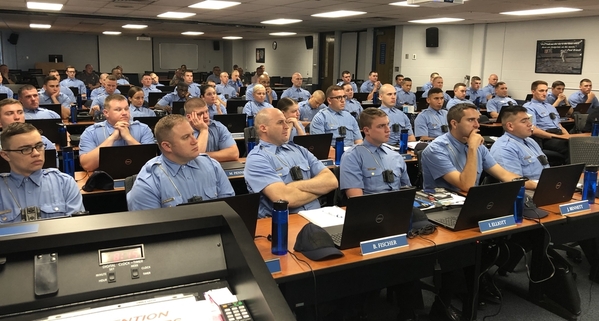When I first learned about ACEs science, I was working for the local police department as the Director of a crime prevention program. This program was aimed at reducing drug related and violent crime by strengthening community partnerships. Our efforts yielded 19 crime prevention programs implemented by 35 community agencies. Together we reduced crime by 40% in one neighborhood, and pioneered a first probation program of its kind in Tennessee to reduce recidivism. At the end of the grant in 2016, the Tennessee Department of Corrections (TDOC) acquired this program and has now replicated it in several cities across the state. In 2014 we were named the “Outstanding Crime Prevention Program of the Year” for the southern region by the National Criminal Justice Association and were listed by the U.S. Department of Justice as a “Success Story.” Of the all the rewarding opportunities my career has had, leading this effort will always hold a special place in my heart.
During this reducing crime journey, I learned ACEs science proved that childhood trauma, without healthy support, was a significant risk factor to addiction as well as other life and health disparities. This impacted me greatly and over time has even shifted my career. It seemed to me of the same challenges facing every community, reducing the effects of childhood trauma as an upstream approach should be included as a solution to solving them. Not only did I learn about ACEs during this time, I also had the opportunity to better understand the roles police play as they honor their oath to “Faithfully Serve and Protect.” I was surprised to see a significant percentage of police work often resembled duties more like “social work.” From working with homeless individuals, doing welfare checks, community and school presentations for kids, responding to horrific suicide or homicide scenes, traffic crashes, domestic violence calls when children are present, to justice involved youth, police constantly serve as navigators for situations that to some of us are the most traumatic life events of all. I witnessed too that when national events escalate due to police brutality that those who dislike police brutality and police corruption most of all are the thousands of honest, community serving, “good police.”
Another kind of trauma I observed was vicarious trauma. This is the trauma officers are submitted to on a daily basis which puts them under great physical and mental stress, and can undermine their health, well-being and judgement. Effects of secondary trauma go beyond officers themselves and extend to loved ones and family members. By combining an understanding of ACEs science and the nature of police work, I knew having a trauma informed lens must be applied to this professional sector. Resources available for officers to address secondary trauma I found are often inadequate. There is the stigma that officers must “soldier on” no matter what they encounter. Think of this as being as effective as me asking you to walk through water but not get wet. Proof that existing supports for handling officer stress are woefully inadequate is the alarming statistic that more officers took their own life than were killed in the line of duty in 2019.
Over the past few years, two documents produced by justice experts on “police reform” have emerged, in the “President’s Task Force on Twenty First Century Policing” and “The New Era of Public Safety.” Recognizing of the 18,000 police departments in America, the communities and populations they serve vary greatly from place to place, it seems reasonable when addressing reform, it’s likely it won’t be “one size fits all” when it comes to finding solutions. However, these reports highlight key principles and emerging best practices that should be embedded in all departments as they strive to promote the values of fairness, equity, procedural justice, legitimacy, transparency, and accountability. Interestingly among other recommendations, BOTH of these reports recommend the use of Community Policing and a need to create a culture in policing that supports and promotes officer well-being.
Community confidence in police is the foundation for community policing. Police officers should understand that they earn trust — and can restore it — through actions that reflect the principles of community policing. By creating genuine relationships through collaborative partnerships that include equitable representation from the community, will lead to citizens to feeling safer and enhance cooperation with police. During my tenure working for police, the precinct Chief (now retired) that I served under was approached by the local NAACP President following the Ferguson shooting with a request to strengthen community partnerships with police. This led to the birth of a wonderful program called “Community Round Table.” The Chief enlisted my help in bringing a diverse group to the table each month that included leaders from communities like NAACP, Black Lives Matters, LGBT, Jewish, Muslim, the Hispanic and Liberian communities, other faith-based leaders, the FBI, local government, university relations and more. We actually advertised meeting times so any community member could attend. In our monthly meetings we had transparent conversations about meaningful ways to strengthen police and community relations. This resulted in launching our first annual Martin Luther King, Jr. Unity March in 2015, as well as starting a Coffee with a Cop program, Party in the Park and many other community-based programs that built upon the existing Community Policing ones.
As I began introducing my community crime prevention partners to ACEs, three years later after training thousands of area professionals, I realized that members of law enforcement should not be left out of the conversation on understanding trauma. If you are just beginning work to create a trauma informed community, I’d encourage you to use the ACEs Connection “Equity Tools”. If you want to become a self-healing, resilient community, you’ll need to include all sectors and this tool will help you make sure all are at the table in your strategic planning. As a front line service provider, members of law enforcement are present during traumatic events of many kinds and need to be educated how to identify trauma and implement actions that do not further re-traumatize individuals they respond to. Having past experience in training officers, I knew that police would need content from their own peers on why they should learn about trauma. At the time I could find no law enforcement training materials available. After long hours of research and reviewing many trauma informed justice related articles; I developed Trauma Informed Policing. This training includes two modules that help participants:
- Gain a shared understanding of trauma
- Recognize how trauma effects the brain
- Be able to identify trauma
- Understand ACEs (Adverse Childhood Experiences)
- Be aware of the prevalence of trauma
- Identify existing trauma-informed policing practices
- Reduce trauma by strengthening cultural competencies and connection
- Trauma responsive approaches for officers
- Tactical Breathing
- Age appropriate ways to reduce trauma on scene
- Importance of officer “self-care”
This course has received certification for officer in-service credit hours in both the state of Tennessee and Oklahoma. To date I’ve trained five departments in the state of Tennessee, Greenville, North Carolina Police Department and the Oklahoma City Police Department. Beyond delivering the training, to me the most exciting aspect is following up later to learn what trauma informed approaches police then initiate. After training OKCPD, Captain R. M. Boxwell, of the Training and Recruiting Division, reported that they launched the Handle With Care program and officers requested that part of their annual in-service would now cover three hours on self-care/mental wellness. Jeff Becker, Deputy Chief of the Oklahoma City Police Department said, “The training that Becky Haas provided was informative and compelling. Her style of delivery was received very well. Trauma Informed Policing can make first responders more effective by putting some very practical tools in their toolbox to help understand people and circumstances encountered by members of law enforcement. In the process, officers further benefit by better understanding reactions to trauma experienced personally or by those we know. We ended the training with an emphasis on officer wellness and reviewing local resources for our employees. Very happy we decided to work with Becky and provide this important information to all of our officers. Highly recommend Trauma Informed Policing training!”

(Training the Oklahoma City Police Department)
Later this month I will be working with the Martinsburg Initiative to train the Martinsburg, West Virginia Police Department. In describing the Martinsburg Initiative, Director Margaret Kursey says, “As evidenced in the Martinsburg Initiative, trauma-informed policing is a critical component for strengthening police-community relationships. When operating under this policing philosophy, relationships strengthen on all levels. In our police/schools/community partnership we work to change the odds for students and their families. We see tremendous value in offering mentoring for students and, through increased visibility in classroom visits, police are serving as positive role models.”
Working to impact officers on a larger scale, I’ve been invited to provide Trauma Informed Policing training in partnership with the Tennessee Association of Chiefs of Police (TACP) in the fall of 2020. TACP efforts will reduce childhood trauma through work on behalf of Tennessee Governor Bill Lee to launch, statewide, the Handle with Care (HWC) law, an innovative partnership with law enforcement and educational systems. Maggi Duncan the Executive Director of TACP is looking forward to making Trauma Informed Policing training available to Tennessee law enforcement. Duncan said, “I knew of Haas’ work in crime reduction with the Johnson City PD, and knew I wanted her assistance when the time came for training.”
As conversations around police reform in your community develop, I encourage you to consider benefits to implementing Trauma Informed Policing both for those served as well as to the officers themselves. Recently I was asked to discuss Trauma Informed Policing in Tennessee on ACEs Connection A Better Normal, episode #39. If you would like to know more about Trauma Informed Policing visit https://beckyhaas.com or email me at Becky@beckyhaas.com


Comments (0)